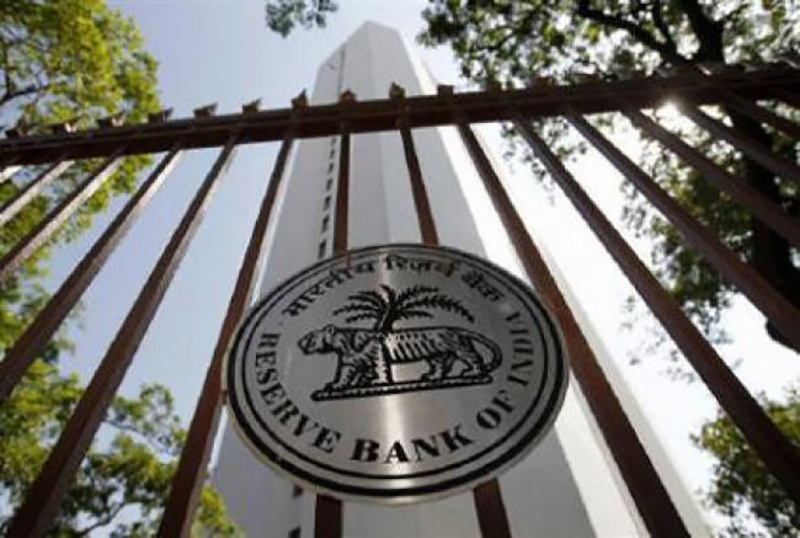
Liquidity in banks likely to cross estimate of Rs 1 trillion as per market trends show 80% of the total Rs 2000 notes are deposited: SBI report
Mumbai: Around 80% of the total Rs 2000 notes received are deposited and the rest 20% are exchanged for smaller denominations as per market trends. Even if a fraction of these trends is extrapolated at the banking level, the liquidity in the banking system will shoot much higher compared to previous estimates of around Rs 1 trillion bulge in deposits even if a fraction, said SBI Ecowrap report on Tuesday.
The SBI report, written by the bank’s Group Chief Economic Adviser Soumya Kanti Ghosh, said that this is based on the current available information and might change depending on further data. The bottom line, however, is that the interest rate cycle might have peaked decisively.
The RBI annual report 2022-23 released on Tuesday underlines that the global economy after experiencing bouts of volatility amidst the successive waves of pandemic and the Ukraine-Russia war, is exhibiting fragile signs of recovery with a rebound in demand for contact intensive services providing the necessary support. Inflation surged across the globe; global trade slowed down and financial volatility increased manifold.
Against this backdrop, India remains resilient with sustained buoyancy in contact-intensive services, the government’s continued thrust on capex, higher capacity utilization in manufacturing, double digit credit growth, easing inflationary pressures on account of softer global commodity and food prices and good rabi crop prospects and rising optimism among businesses and consumers sustaining the momentum in FY24.
In terms of Rs 2,000 banknotes, the SBI report citing the RBI report, “Interestingly, notes issued by RBI increased to Rs. 33.48 lakh crore in FY23 from Rs. 31.05 lakh crore in FY22. Correspondingly, as their backing, RBI increased (i) Gold to Rs. 1.4 lakh crore in FY23 from Rs. 1.25 lakh crore in FY22, (ii) Foreign Investments to Rs. 32.07 lakh crore in FY23 from Rs. 29.79 lakh crore in FY22.”
The report shows moderation in net financial saving of the household sector to 7.6% of GNDI in FY22 from 11.3% in FY21, reflective of the release of pent-up demand, and the associated drawdown in precautionary saving as concerns relating to income flows in FY22.
GNDI stands for Gross National Disposable Income. It is a macroeconomic indicator that represents the total income earned by individuals, businesses, and the government of a country from both domestic and foreign sources.
Despite the moderation in financial savings, one interesting fact is that the per capita net financial saving has increased by around Rs 1500 to Rs13,105 in FY22 as compared to pre-pandemic level of Rs.11,590 (FY20).
“Based on current trends we estimate that the net financial savings may have reached 8% of GNDI in FY23. The per capita net financial saving may have increased to approx. Rs. 15,700 in FY23,” SBI report stated.
The RBI balance sheet is a snapshot of the evolving future risk. The movements in capital and realized equity over time in the balance sheet are good qualitative indicator of how key risks (interest rate risk and exchange rate risk) may evolve in the next year.
The provisioning trends show the future perception of risk from the RBIs perspective which may be suitably adjusted for other market participants.
The trends in the provisioning of risk since 2019 show that RBI has maintained realized equity at 5.5% till 2022.
However, in 2023 the risk buffer has been increased to 6% indicating higher expected risk on account of market fluctuations in FY24.
The provisioning has been increased in the contingency buffer (CF).
An amount of Rs. 1,30,875.75 crore was provided for towards CF in 2023 while all other funds were maintained at previous year’s levels.
The best thing is the value of frauds in FY23, has declined significantly, by as much as 83% since FY20, with a decline most perceptible for PSBs at 85%.
The amount involved in frauds that occurred in previous financial years formed 93.7% of the frauds reported in FY22 in terms of value.
Similarly, 94.5% of the frauds reported in FY23 by value occurred in previous financial years.
It may be noted that the public sector banks have already unveiled a comprehensive fraud risk management framework encompassing (i) better directions on frauds in the light of experience gained and big data analytics and (ii) comprehensive reviews to sensitize on fraud prevention, prompt/accurate reporting and follow up action.
Meanwhile, out of 136.2 billion pieces, only 2.26 lakh pieces are counterfeit (0.0002%)!
Support Our Journalism
We cannot do without you.. your contribution supports unbiased journalism
IBNS is not driven by any ism- not wokeism, not racism, not skewed secularism, not hyper right-wing or left liberal ideals, nor by any hardline religious beliefs or hyper nationalism. We want to serve you good old objective news, as they are. We do not judge or preach. We let people decide for themselves. We only try to present factual and well-sourced news.







